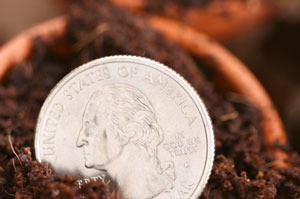Spring gardening can sometimes add up to quite a chunk of cash. Instead of burying your money in the soil, plant some of these seeds and grow some savings.
Mulch can be expensive, especially when purchased in bags at the home improvement store. Save on the cost of packaging and purchase loads of it from a local landscaper. Another option is to check your local recycling center. Many yard waste recyclers offer free mulch on certain days of the week. The branches you dropped off in the fall have now become your spring mulch. The only cost is the work it takes to load it onto your truck or trailer.
The expensive plastic-like weed blocker sold at stores isn't a necessity when creating a new planting area. This hard to manage investment isn't guaranteed to last a lifetime either, and anyone who has used it can attest to its lack of cooperation if you decide to dig in the area later in the year. Instead, use grandma's trick of putting newspaper down before covering it with dirt or mulch. The paper will block the sun from reaching the weeds, thus killing them. In time it will then break down naturally. Instead of its pesky plastic counterpart, replacement of this worn out material is easy'just add a new layer each year before putting down the mulch. Be sure to use the non-glossy paper for the best decomposition.
Invest in perennials this year. While the annuals such as impatiens and petunias are pretty, they are a yearly investment as well as yearly work. Splurge this year and pay for plants that will grow and spread each year. If you can't resist the annuals, and I'll admit that I love perky impatiens, use them sparingly. Impatiens can add color to shady spots, so hide a plant here and there. Avoid making an expensive boarder of the plants; a week of dry weather will kill your investment. Instead, opt for a hardier plant for your growing zone.
Despite all of the products out there, the best fertilizer is compost. It takes a little bit of space and some patience to set up a good compost pile, but it will be worth it. The woman with the largest tomatoes in her garden usually will tell you it's the compost not the gardener that makes the crop.
A composting area can be made from a simple fenced enclosure to a more extravagant turning compost bin. Small kitchen compost bins can be made from a rubber storage bin, some dirt, sand, and a handful of worms. Do some research and learn how to make your own, 100% natural, organic fertilizer.
Toil in your garden; don't let it toil upon you.

Add your voice! Click below to comment. ThriftyFun is powered by your wisdom!